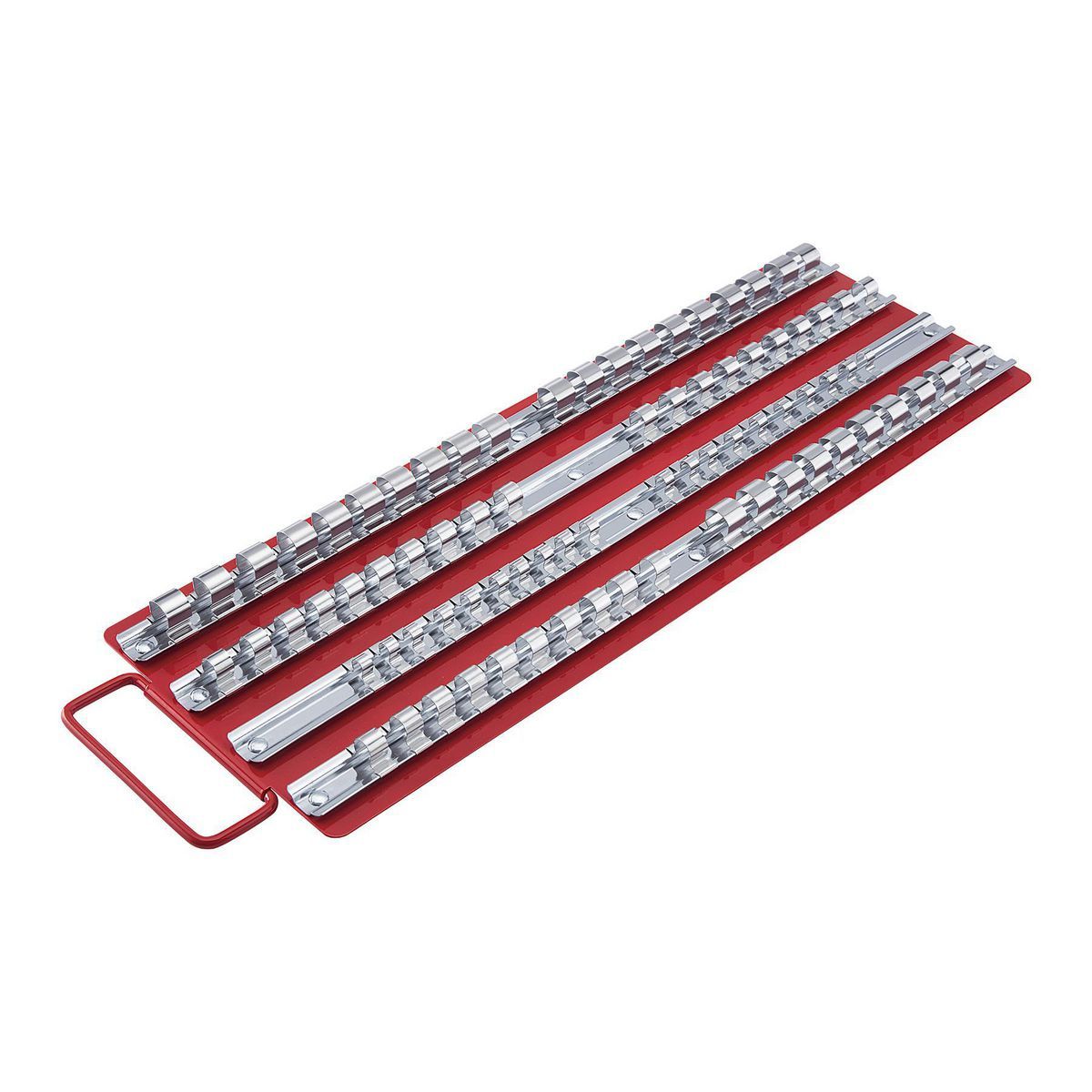Personalized Socket Organizer Perspective:
The appeal of customized socket organizers lies in their ability to cater to individual needs and preferences. Here’s why personalized socket organizers are favored by many:
Tailored Organization: Custom socket organizers allow users to design layouts that perfectly fit their socket sets. This ensures a snug and secure fit for each socket, preventing them from shifting or getting lost.
Optimized Workspace: By creating a socket organizer that fits specific toolbox dimensions or workbench layouts, users can maximize their available workspace. Custom organizers ensure efficient use of space and eliminate clutter.
Tool Selection Efficiency: With personalized organizers, users can arrange their sockets in a way that facilitates quick identification. This speeds up the tool selection process, enhancing overall productivity.
Flexibility and Expansion: Personalized socket organizers can be designed to accommodate different socket sizes and types. Additionally, users can easily add or rearrange compartments as their tool collection grows.
3D Printing Perspective:
3D printing technology has revolutionized the creation of custom socket organizers. Here are the ways 3D printing enables personalized solutions:
Design Flexibility: 3D printing allows users to design intricate and precise socket organizer layouts, incorporating features like adjustable dividers, tool holders, and identification labels.
Rapid Prototyping: With 3D printing, users can quickly create prototypes of their socket organizer designs, allowing them to test the fit and functionality before finalizing the design.
Material Variety: 3D printing can utilize various materials, including plastics, resins, and even metals, offering users the freedom to choose materials that suit their specific requirements.
User-Created Designs: Many 3D printing platforms and communities provide access to a vast library of user-created socket organizer designs. Users can either modify existing designs or create their own from scratch.
Multi-Tool Integration Perspective:
Socket organizers that can accommodate other tools or accessories provide a compact and comprehensive solution for users. Here’s why these organizers are highly regarded:
Space Optimization: Multi-tool socket organizers eliminate the need for separate storage solutions for different tools, saving space and promoting better organization.
All-In-One Convenience: Having sockets and other tools or accessories in one organizer streamlines the workflow, as users can access everything they need from a single location.
Versatility: Multi-tool socket organizers can hold a variety of tools, such as wrenches, screwdrivers, pliers, and more, catering to the diverse needs of different tasks and projects.
Portable Solutions: Compact multi-tool organizers are excellent for on-the-go use, making them popular among technicians and mechanics who need to carry their tools to various job sites.
User-Designed Perspective:
Users have the creative freedom to design and create their own custom socket organizers based on their unique requirements. Here’s how they can go about it:
Determine Needs: Assess the types and sizes of sockets in the collection and consider any other tools or accessories that need to be stored together with the sockets.
Sketch the Design: Start with a rough sketch of the desired organizer layout, including the number of compartments, dimensions, and any additional features like labels or holders.
Utilize 3D Design Software: Use 3D design software to create a digital model of the socket organizer. This step allows for precise measurements and adjustments before printing.
Choose Materials: Select suitable 3D printing materials, considering factors like durability, flexibility, and anti-slip properties to ensure the organizer meets the intended purpose.
3D Print the Organizer: Utilize a 3D printer to bring the digital design to life. This may require multiple printing iterations to achieve the desired fit and functionality.
Test and Refine: Test the 3D-printed organizer with the socket collection to ensure a proper fit and user-friendly design. Make any necessary refinements based on the testing results.
Finalize the Design: Once satisfied with the prototype, finalize the design and print the customized socket organizer for long-term use.
